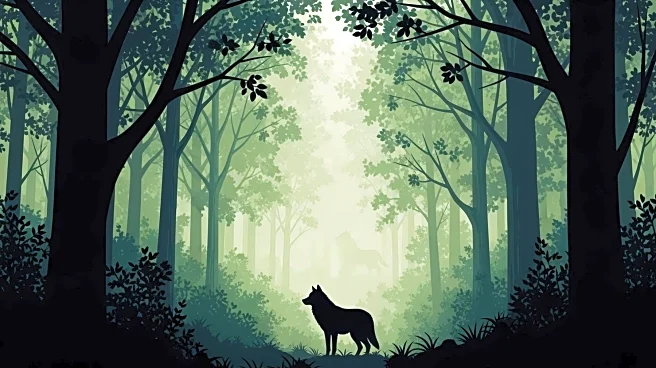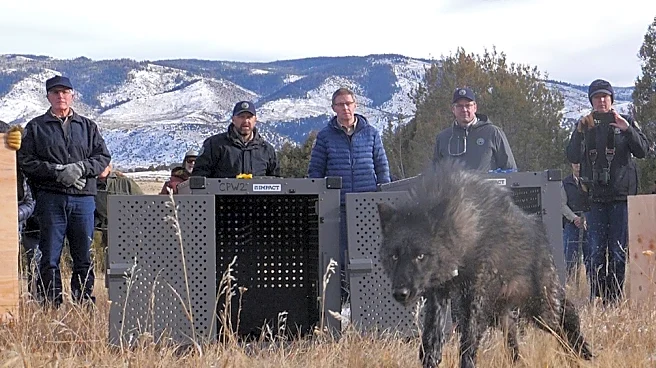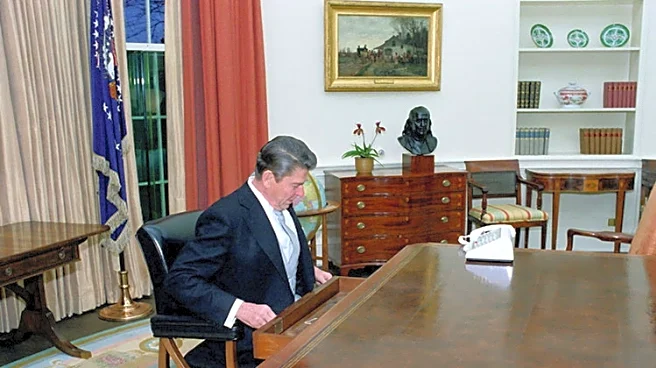What's Happening?
The Trump administration has instructed Colorado to halt the importation of gray wolves from Canada for its reintroduction program, a move that could disrupt the state's plans for further releases. Since
2023, Colorado has been releasing wolves west of the Continental Divide following a voter-approved initiative in 2020. Currently, around 30 wolves inhabit the mountainous regions, with a long-term goal of increasing the population to 200 or more. The program has faced opposition in rural areas due to livestock attacks. The U.S. Fish and Wildlife Service, under President Trump, has mandated that Colorado source wolves from Northern Rockies states instead of Canada. This directive was communicated in a letter from U.S. Fish and Wildlife Service Director Brian Nesvik to Colorado Parks and Wildlife Director Jeff Davis. The state had planned to relocate 10 to 15 wolves from British Columbia, Canada, but this plan is now uncertain due to the federal directive.
Why It's Important?
This development is significant as it affects Colorado's ability to continue its wolf reintroduction program, which has been a contentious issue due to livestock predation concerns. The directive to source wolves domestically could limit the state's options, potentially slowing down the reintroduction process. This decision reflects broader political dynamics, as federal support under President Trump contrasts with previous policies during the Biden administration. The outcome of this directive could influence conservation efforts and the balance between wildlife management and agricultural interests in Colorado. Stakeholders such as ranchers, conservationists, and state officials are likely to be impacted, with potential legal and policy challenges arising from this federal intervention.
What's Next?
Colorado officials, including Governor Jared Polis's office, are in discussions with the U.S. Interior Department to explore options for continuing wolf releases this year. The state is evaluating its strategies in light of the recent federal guidance, which may involve negotiating with Northern Rockies states or seeking alternative solutions. The situation remains fluid, with potential for legal challenges or policy adjustments as Colorado navigates the federal directive. The outcome will likely influence future wildlife management practices and intergovernmental relations concerning conservation efforts.
Beyond the Headlines
The directive raises questions about federal versus state authority in wildlife management and conservation. It highlights the complexities of balancing ecological restoration with agricultural interests, particularly in regions where livestock predation is a concern. The situation underscores the political dimensions of environmental policy, with implications for how states can pursue conservation initiatives under varying federal administrations. Long-term, this could affect the precedent for state-led wildlife reintroduction programs and the role of federal oversight.













